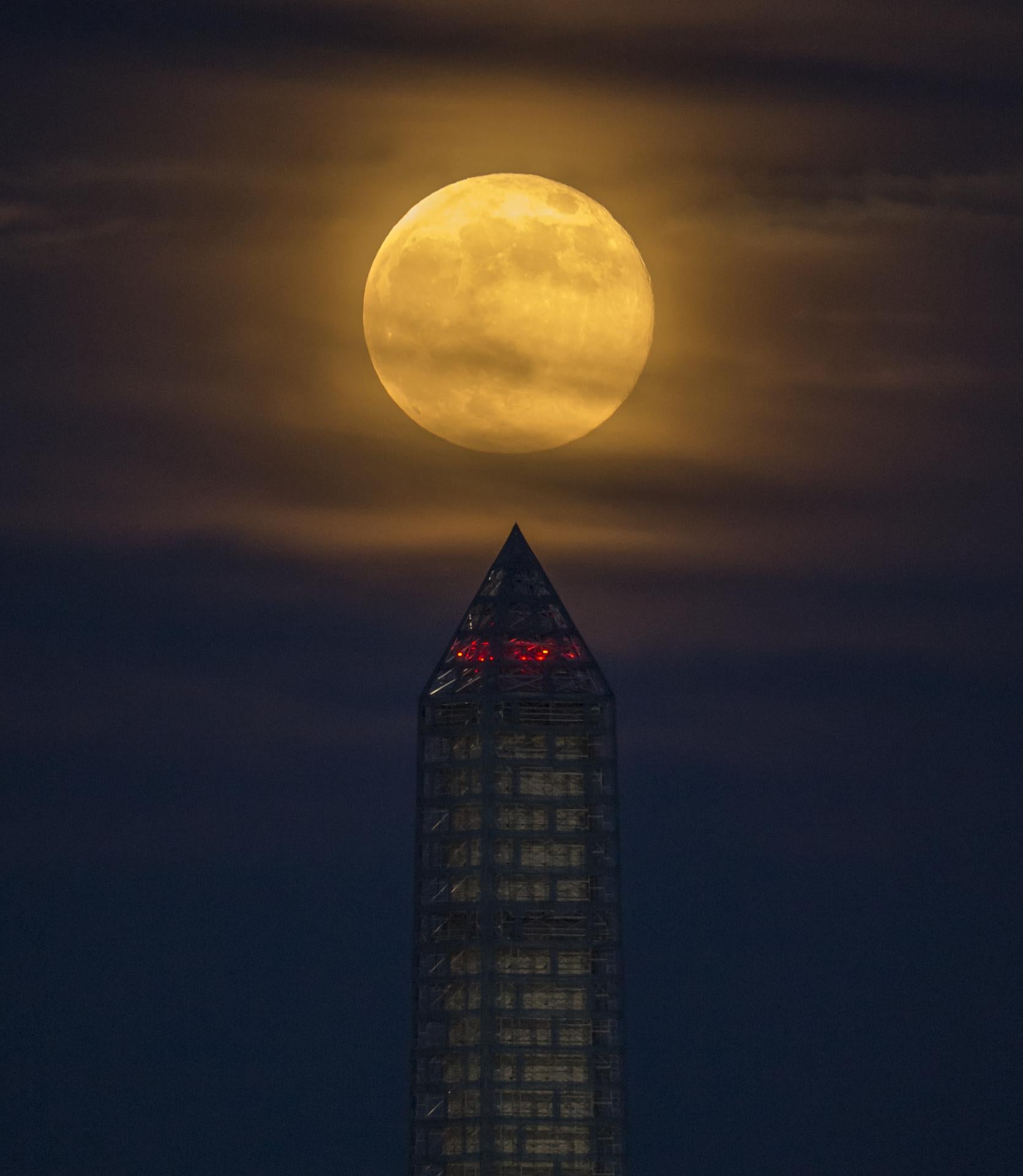A Super Strawberry Moon will brighten the sky Tuesday morning
Strawberry Supermoon will grace skies Tuesday morning

Early risers in the Americas will be greeted by a sweet Super Strawberry Moon Tuesday morning.
The Strawberry full moon, sometimes known as the Mead or Honey full Moon, will appear eight degrees above the horizon in the Southwestern sky around 7.52am EDT Tuesday Morning, or about 11.52am GMT. Tuesday morning will also tie Monday for the earliest sunrise of 2022, with the Sun peeking up at 5.42 am EDT, according to a Nasa blog.
A supermoon takes place when the full Moon coincides with the Moon coming within 90% of its closest approach to Earth, or perigee, according to another Nasa blog.
The Moon’s orbit oscillates between 363,300 kilometers and 405,500 kilometers from Earth every 27 days, but the full Moon doesn’t always line up with its closest approach to Earth. The next and only other supermoon of 2022 will be the Super Buck Moon on 13 July.
A supermoon appears about 17% larger and 30% brighter than a full Moon when the Moon is at its furthest point from Earth. The difference is not always noticeable to the naked eye, according to Nasa, but a supermoon can have real effects for life on Earth, such as generating higher than usual tides.
The term strawberry Moon comes from the Native American Algonquin tribe by way of the Maine Farmer’s Almanac, which began publishing the tribe’s names for various full Moons in 1930, according to a Nasa blog on supermoons. Other names for Tuesday’s full Moon include the old European term Honey or Mead Moon, Rose Moon, also European in origin, while Buddhists in Sri Lanka know it as Poson Poya.
Also visible Tuesday morning — and for much of the month of June — will be an arc of planets arrayed in order of their distance from the Sun.
Just before morning twilight begins at around 4.30am EDT, Mercury will rise above the East-Southeastern sky. Tracing an arc to the Southeast will also be visible Venus, then Mars, Jupiter and finally Saturn. The last time such a planetary alignment was visible was in 2004.
Join our commenting forum
Join thought-provoking conversations, follow other Independent readers and see their replies
Comments
Bookmark popover
Removed from bookmarks